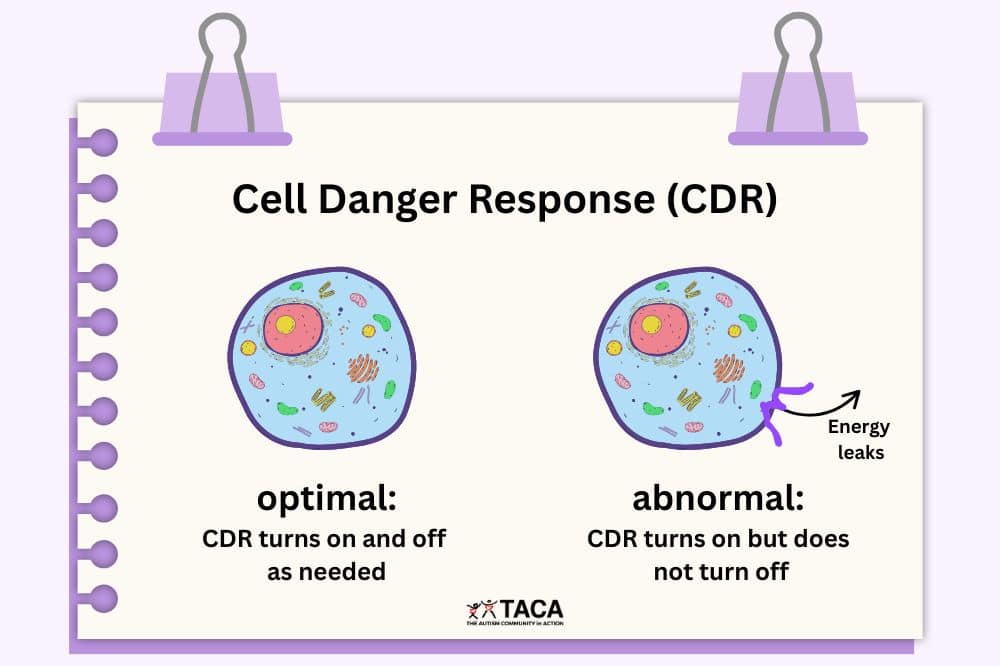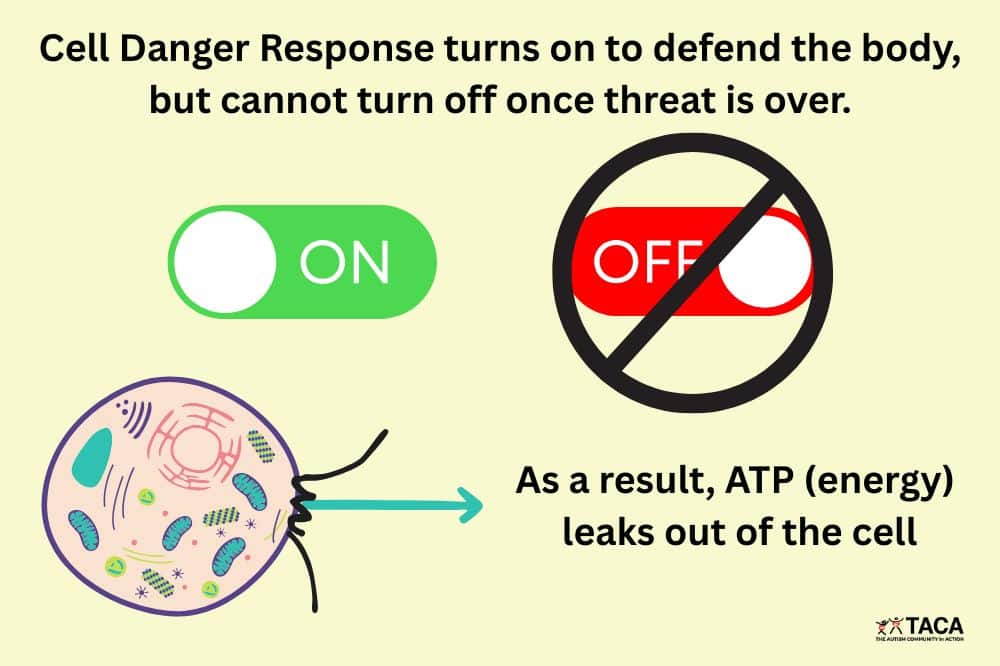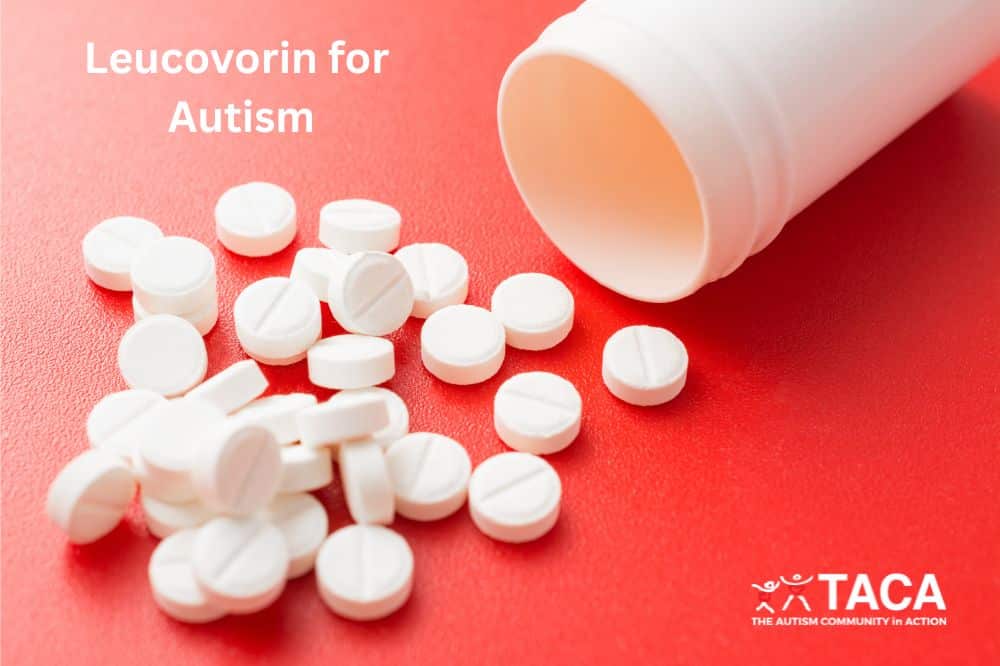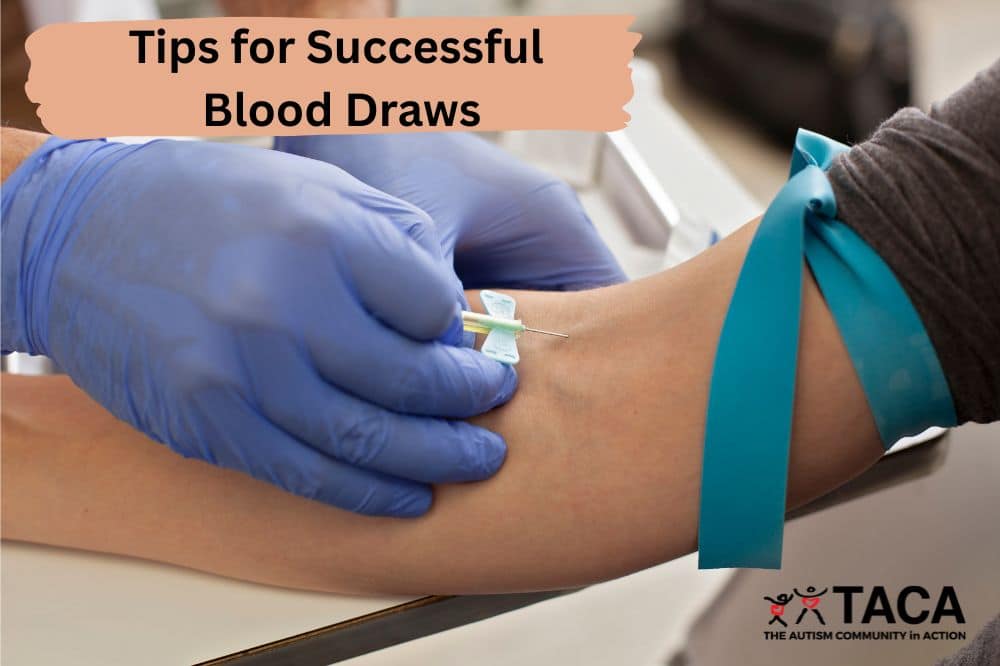The Cell Danger Response in Autism

All contents of this resource were created for informational purposes only and are not intended to be a substitute for professional advice, diagnosis, or treatment. Always seek the advice of your physician, therapist, or other qualified health providers with any questions or concerns you may have.
The cell danger response (CDR) is a chronic stress response that occurs on a cellular level involving the mitochondria. Mitochondria are responsible for producing ATP, or cellular energy, that fuels every process in the body. Dr. Robert Naviaux is credited with introducing this through his research, and theorizing that autism is the result of a persistent cell danger response (CDR).
This article will cover:
- What is the cell danger response?
- Why is this important?
- Treatment approach
- Anti-purinergic drugs
The proposed medical problem in autism:
Autism (and many other chronic illnesses) are caused by the cell danger response (CDR) turning on, as it should, but not TURNING OFF, thus creating a chronic state of mitochondrial dysfunction and inflammation.
What is the Cell Danger Response (CDR)?
Cell danger response describes the body’s normal response to stress, such as injury, infection, extreme emotional stress, and/or trauma. Unfortunately, in chronic illnesses, it becomes stuck, preventing the completion of the healing process.
In other words, the cell danger response turns on as it should, but cannot turn off when the danger is no longer there.
When stuck in this response, energy (ATP) leaks outside the cell, and cells divert cellular energy required to live and thrive to protect themselves, resulting in chronic fatigue (Mitochondrial Dysfunction) and lasting inflammation.
It produces an overactive immune response that persists long after the acute infection or injury has passed.
All stressed cells leak ATP (energy), as a signal of that stress to neighboring cells. However, in autism, leaking ATP inhibits the healing cycle. Interestingly, even after the pathogenic trigger (illness/stressor) is removed or resolved, the healing cycle and typical development do NOT progress normally.
Furthermore, in the more severe form of mitochondrial disease, there is low intracellular ATP (low energy inside the cell). However, the big difference is that in autism, there is increased extra-cellular ATP (extra energy outside the cell) from ATP leaking from the cell.

Why is this important?
A cell danger response that does not turn off can result in impaired function of organ systems such as the liver, skin, gut, and brain.
It also may produce hardened cell walls, resulting in an inability to properly absorb nutrients and expel toxins appropriately.
In turn, these things can result in developmental disorders, chronic fatigue, immune dysfunction, chronic inflammation, dysautonomia, and more. Dysautonomia is a condition that affects the autonomic nervous system, which controls involuntary bodily functions such as heart rate, blood pressure, digestion, and sweating.
Treatment Approach
Remove Cellular Stressors
- Lower exposure to toxins
- Treat pathogens (chronic bacterial or viral infections, pathogenic gut bacteria, fungal overgrowth, and more)
- Lower EMF Exposure
Support Mitochondria
- Nutrient-dense, diverse diet
- Mitochondrial Cocktail
- This is a combination of supplements that support the mitochondria given at therapeutic doses.
- Grounding
- Exercise
- Movement tells the cells to produce more energy
- HBOT (if the body can produce more mitochondria – run MitoSwab to check)
- Safe detoxification strategies
- Phospholipids that support the flexibility of the cell wall
- Consider medications that may be harming the mitochondria
- Notable medications are Acetaminophen (Tylenol), Risperidone (Risperdal), Valproic Acid (Depakote), Propofol, Fluoxetine (Prozac), and Haloperidol (Haldol), beta-blockers (propranolol), Hydrocortisone
Nervous System Regulation
- Brain retraining
- Neurofeedback, DNRS, Primal Trust
- Limbic system healing
- Yoga, deep breathing exercises
- Vagus nerve toning
- This acts as the brake on the fight or flight response
- Gargling, singing, humming, laughing
- Better sleep health
- Reduce emotional stress
Improve cell signaling
- Antioxidants to combat oxidative stress
- Red Light therapy
- Helps cells respond to damage and rejuvenate.
- NAD+
- There are nasal sprays, patches, and infusions
The promise of anti-purinergic drugs
We are encountering new environmental triggers every day. It’s not enough to simply remove existing environmental triggers. We must create a new path with anti-purinergic drugs that stop the ATP from leaking from the cell.
Suramin is an anti-purinergic agent that stops the cell from leaking ATP (energy).
- A 2017 Study (using one dose of IV suramin) resulted in a significant difference in kids who received Suramin, but no difference in the placebo group.
- The children had increased language and social interaction, lower stims, and restricted interests.
- One child finished 3 years’ worth of work in 3 weeks at school.
Pharmaceutical companies are creating new formulas of anti-purinergic drugs, and they are being trialed.
- Important details are to be determined in future trials, such as best doses, mode of delivery, and time intervals.
These drugs are NOT available for use yet, but hopefully, soon, the trials will be completed in the US and can go to the FDA for approval.
Conclusion
The unresolved cell danger response theory contributing to chronic illness, including autism, is viable. Until there is a pharmaceutical treatment developed, there are numerous other options to support the body on a cellular level, including removing stressors, supporting the mitochondria, nervous system regulation, and improving cell signaling.




